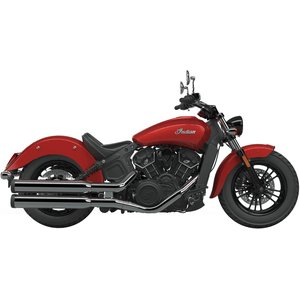Living the Legend: A Rider’s Review of the Indian Scout Sixty (2016–2019)
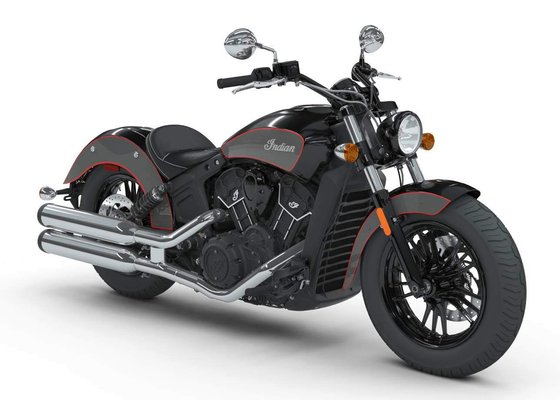
When Indian Motorcycle revived the Scout nameplate, they didn’t just resurrect a classic—they redefined what a modern cruiser could be. The Scout Sixty, produced from 2016 to 2019, stands as a bridge between heritage and innovation. Designed to be approachable yet thrilling, this bike isn’t just a machine; it’s an invitation to carve your own legacy. After spending time with this V-twin marvel, here’s why it continues to turn heads and ignite passions.
Design & Aesthetics: A Nod to Heritage, a Wink to Modernity
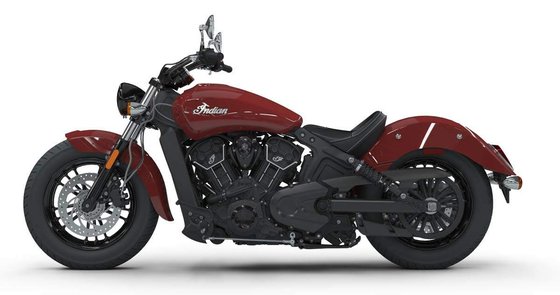
The Scout Sixty’s design is a masterclass in balancing old-school charm with contemporary aggression. The fleet-sided fenders, a direct callback to the 1920s Scout, flow seamlessly into a minimalist frame that screams modernity. Blacked-out components—the headlight, handlebars, and engine—give it a stealthy, no-nonsense attitude. Even the solo seat, trimmed in leather, feels like a deliberate statement: this is a rider’s bike, unapologetically focused on the journey ahead.
The cast aluminum frame isn’t just lightweight (246 kg / 542 lbs dry); it’s a structural sculpture. The rigid triangle design, inspired by the original Scout, hides its complexity behind clean lines. Details like the split dual exhaust with crossover and 16-inch cast wheels wrapped in chunky tires (130/90-16 front, 150/80-16 rear) add muscularity without bulk. Whether parked or in motion, the Scout Sixty exudes confidence.
Engine & Performance: Small Block Power, Big Block Soul
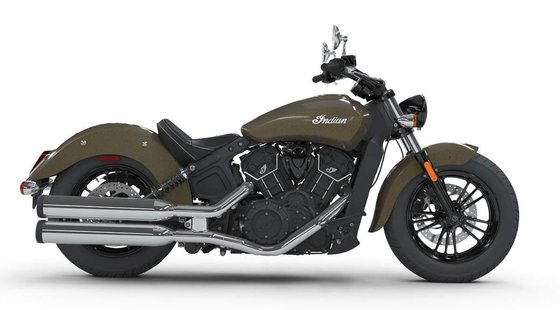
At the heart of the Scout Sixty lies its 999.6cc (61 cubic inch) liquid-cooled V-twin. With 78 horsepower at 7,300 rpm and 65.5 lb-ft (88.8 Nm) of torque peaking at 5,600 rpm, this engine is a paradox—it’s approachable for newcomers but thrilling for seasoned riders. Thumb the electric starter, and the engine settles into a subdued idle, belying the fury it’s capable of unleashing.
Twist the throttle, and the Scout Sixty surges forward with linear urgency. The 5-speed transmission shifts smoothly, though the absence of a 6th gear is noticeable at highway speeds. That said, the belt drive system is a revelation—silent, clean, and virtually maintenance-free compared to chain-driven rivals. Cruising at 110 km/h (68 mph), the engine hums at a relaxed 3,500 rpm, but it’s happiest when carving backroads, where the torque-rich midrange lets you apex corners without constant gear shuffling.
Handling & Ride: Lightweight Agility Meets Cruiser Stability
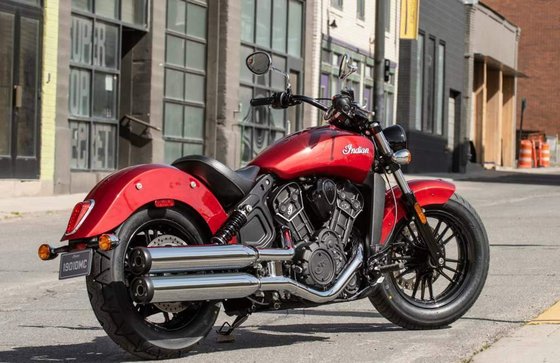
Don’t let the cruiser tag fool you—the Scout Sixty handles like a bike half its weight. The 29-degree rake and 119.9mm (4.7-inch) trail strike a perfect balance between stability and flickability. Lean it into a corner, and the low center of gravity (seat height: 643mm / 25.3 inches) inspires confidence. Ground clearance is limited (135mm / 5.3 inches), but the chassis communicates clearly when you’re nearing its limits.
The suspension—41mm telescopic forks up front and dual shocks at the rear—is tuned for compliance rather than sportiness. It soaks up bumps adequately at lower speeds, though sharper imperfections can jolt through the rider triangle. Where this setup shines is in low-speed maneuvers. U-turns and parking lot crawls feel effortless, thanks to the narrow handlebar pull and predictable throttle response.
Braking is handled by a single 298mm rotor with a 2-piston caliper up front and a matching rotor with a 1-piston caliper at the rear. ABS became standard on non-black models in 2019, a welcome safety net for wet roads. While the setup lacks the bite of radial-mounted Brembos, it’s progressive and suits the bike’s relaxed demeanor.
Comfort & Ergonomics: A Blank Canvas for Customization
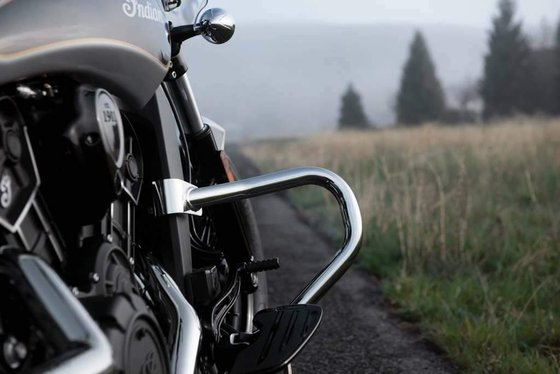
The Scout Sixty’s ergonomics are a starting point, not a final answer. The stock setup—mid-mounted footpegs, flat handlebars, and a firm solo seat—favors riders under 6 feet (183cm). At 5’8” (173cm), I found the reach natural, but taller testers complained of cramped knees. Thankfully, Indian’s accessory catalog transforms the bike. Swapping to extended-reach foot controls or 10-inch ape hangers takes minutes, not days.
The 12.5L (3.3-gallon) fuel tank is a nod to the bike’s minimalist ethos, but it demands frequent stops—expect 160-190 km (100-120 miles) between fill-ups. Wind protection is nonexistent, making sustained highway rides a battle against fatigue. A quick-release windscreen from Indian’s accessories solves this, but it’s an added cost.
Competition: How the Scout Sixty Stacks Up
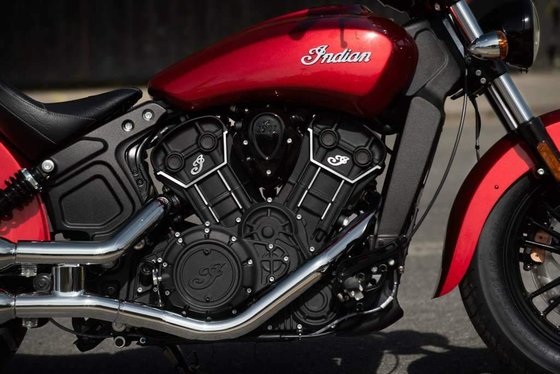
In the mid-size cruiser arena, the Scout Sixty faces fierce rivals:
-
Harley-Davidson Iron 883: The Harley trades the Scout’s refinement for raw, air-cooled character. Its 883cc Evolution engine feels agricultural next to the Indian’s smooth V-twin, but the aftermarket support is unmatched. The Iron 883 also weighs 256 kg (564 lbs) wet—nearly identical to the Scout—but lacks its polish.
-
Yamaha Bolt R-Spec: Yamaha’s 942cc V-twin is a gem, but its 54 hp pales next to the Scout’s 78 hp. The Bolt’s suspension is plusher, and its $8,499 MSRP undercuts the Indian. However, the Scout’s aluminum frame and modern tech (like standard ABS post-2019) justify the premium.
-
Honda Shadow Phantom: The Shadow’s 745cc V-twin is bulletproof but underwhelming (44 hp). It’s lighter (238 kg / 525 lbs) and cheaper, but the Scout Sixty’s performance and customization options make it a more compelling long-term partner.
Verdict: The Scout Sixty wins on power, handling, and modern engineering. It’s the cruiser for riders who refuse to sacrifice performance for tradition.
Maintenance: Keeping the Legend Alive
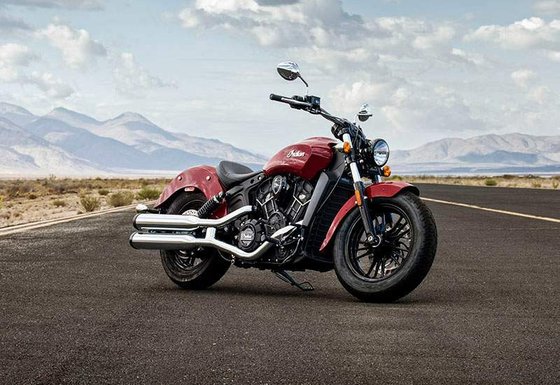
The Scout Sixty’s semi-dry sump engine and belt drive minimize upkeep, but here’s what owners should prioritize:
- Oil Changes: Use SAE 15W60 synthetic. The 4.73L (5-quart) capacity and cartridge filter make DIY changes straightforward.
- Cooling System: Check coolant levels annually. The liquid-cooled design runs cooler than air-cooled rivals, but leaks can spell disaster.
- Belt Tension: Inspect every 12,000 km (7,500 miles). Unlike chains, belts don’t need lubrication, but misalignment causes premature wear.
- Brake Fluid: Flush every two years with DOT 4 fluid. Post-2019 ABS models demand extra care to avoid air bubbles.
Pro Tip: Upgrade the stock suspension with Indian’s Fox® Performance Shocks. The adjustable preload and rebound transform ride quality, especially for two-up touring.
Customization: Make It Uniquely Yours
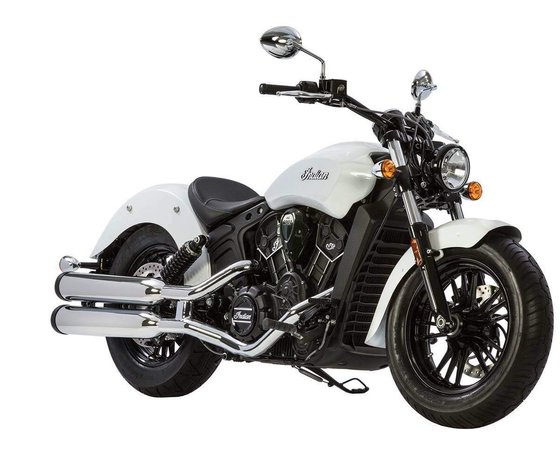
The Scout Sixty’s modular design begs for personalization. Popular MOTOPARTS.store upgrades include:
- Stage 1 Slip-On Exhaust: Unleashes the V-twin’s growl while remaining 50-state legal.
- Performance Air Intake: Adds 5% horsepower and sharpens throttle response.
- Reduced/Extended Reach Seats: Tailor the riding position to your physique.
- Wire-Spoke Wheels: Swap the cast alloys for a classic scrambler look.
Final Thoughts: The Scout’s Enduring Appeal
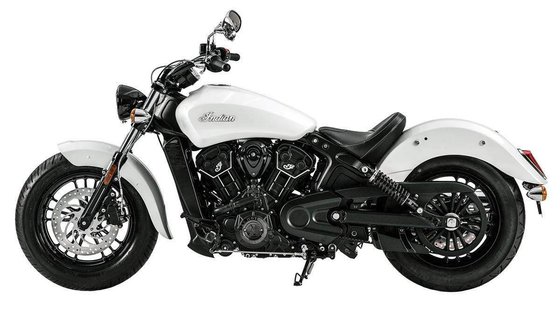
The Indian Scout Sixty isn’t just a motorcycle—it’s a catalyst for reinvention. It respects its roots without being shackled by them, offering a blend of performance and personality that few cruisers can match. Whether you’re threading through city traffic or chasing horizons, this bike reminds you why riding matters. And with a vast ecosystem of upgrades, it’s a platform that grows with your ambitions.
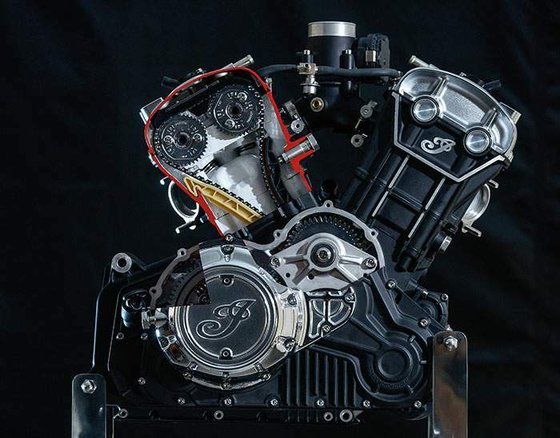
So, is the Scout Sixty legendary? Not yet. But it’s ready to help you write your own legend—one mile at a time.












Specifications sheet
| Engine | |
|---|---|
| Stroke: | Four-stroke |
| Max power: | 57 kW | 76.0 hp |
| Max torque: | 89 Nm |
| Fuel system: | Closed Loop Sequential Port Fuel Injection |
| Lubrication: | Semi-Dry Sump |
| Max power @: | 7300 rpm |
| Displacement: | 999 ccm |
| Max torque @: | 5600 rpm |
| Configuration: | V |
| Cooling system: | Liquid Cooled |
| Compression ratio: | 10.7:1 |
| Number of cylinders: | 2 |
| Dimensions | |
|---|---|
| Wheelbase: | 1562 mm (61.5 in) |
| Dry weight: | 246 |
| Wet weight: | 256 |
| Seat height: | 643 mm (25.3 in) |
| Overall width: | 880 mm (34.6 in) |
| Overall height: | 1207 mm (47.5 in) |
| Overall length: | 2311 mm (91 in) |
| Ground clearance: | 135 mm (5.3 in) |
| Fuel tank capacity: | 12.5 L (3.3 US gal) |
| Drivetrain | |
|---|---|
| Belt teeth: | 141 |
| Final drive: | belt |
| Transmission: | 5-speed |
| Maintenance | |
|---|---|
| Rear tire: | 150/80-16 |
| Engine oil: | 15W60 |
| Front tire: | 130/90-16 |
| Brake fluid: | DOT 4 |
| Spark plugs: | NGK MR7F |
| Spark plug gap: | 0.8 |
| Coolant capacity: | 2.6 |
| Forks oil capacity: | 0.6 |
| Engine oil capacity: | 3.8 |
| Recommended tire pressure (rear): | 2.5 bar (36 psi) solo, 2.8 bar (41 psi) with passenger |
| Recommended tire pressure (front): | 2.5 bar (36 psi) |
| Additional Info | |
|---|---|
| Battery: | 12V 12Ah AGM (210 CCA) |
| Charging system: | 35 amp max output |
| Factory warranty: | 2 years |
| Chassis and Suspension | |
|---|---|
| Rake: | 29° |
| Frame: | Cast aluminum |
| Trail: | 119.9 mm (4.7 in) |
| Rear brakes: | Single 298 mm disc, 1-piston caliper (optional ABS) |
| Front brakes: | Single 298 mm disc, 2-piston caliper (optional ABS) |
| Rear suspension: | Dual shocks |
| Front suspension: | 41 mm Telescopic fork |
| Rear wheel travel: | 76 mm (3.0 in) |
| Front wheel travel: | 120 mm (4.7 in) |



